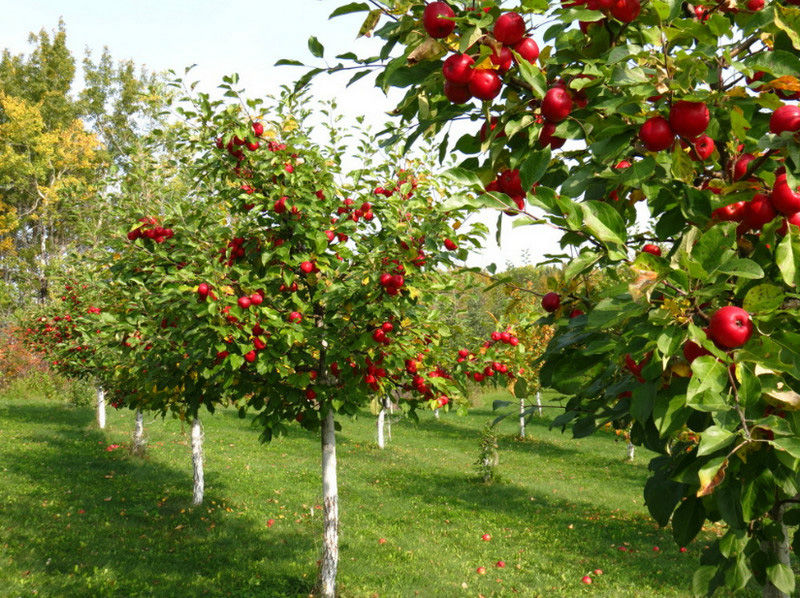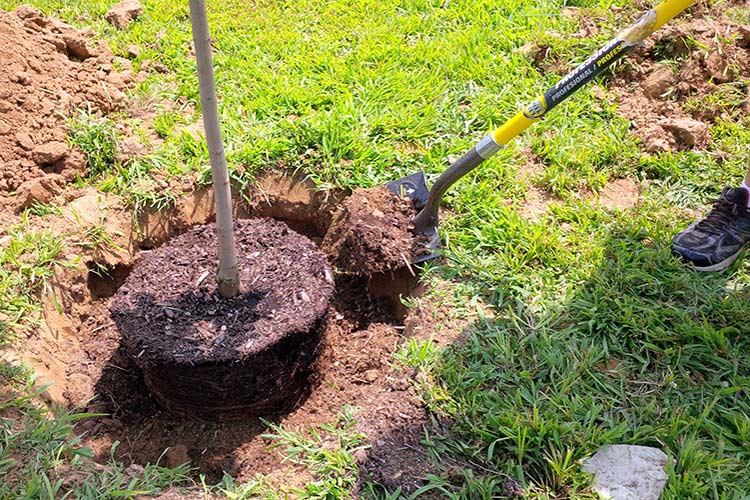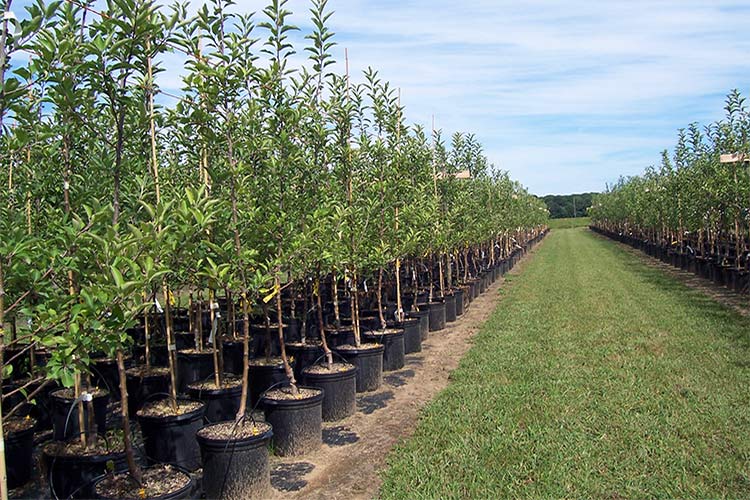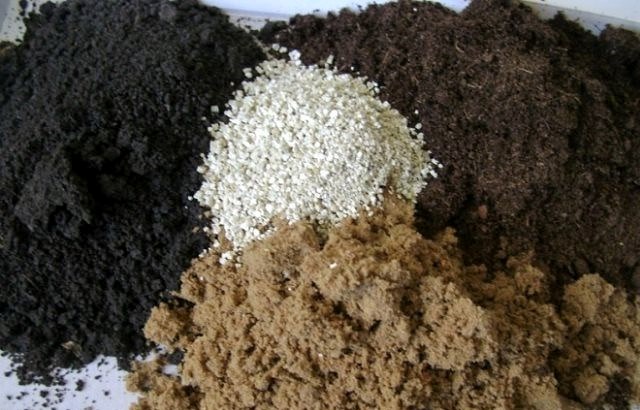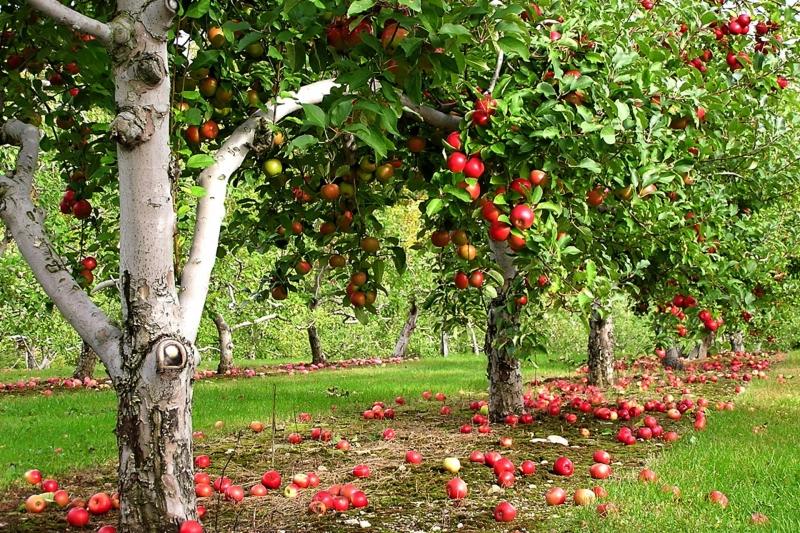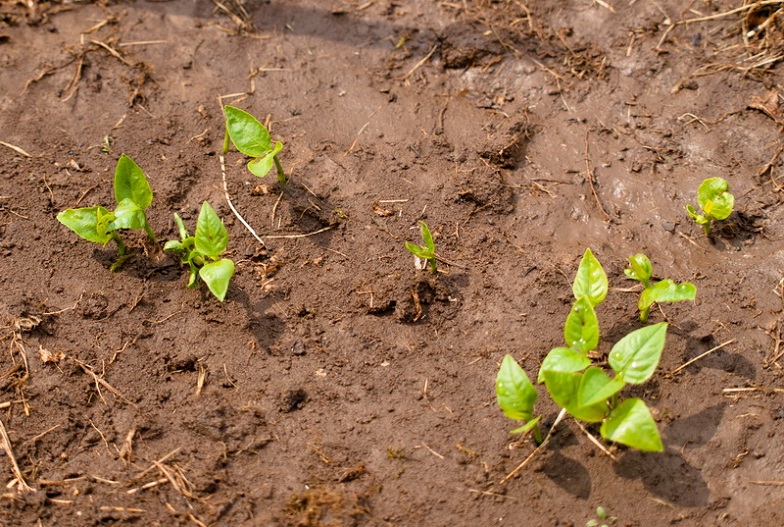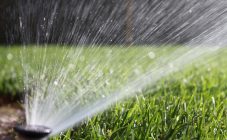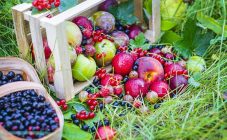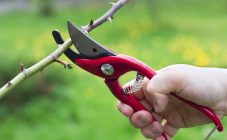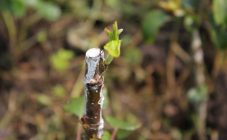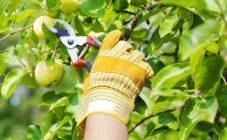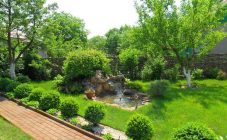Content:
Regardless of whether the summer resident has acquired empty land or has long been the owner of a gorgeous plot, planting fruit trees will not blow anyone's mind. Some will create the garden of their dreams, others will rejuvenate it. All work must be carried out according to the rules and on time.
About the rules and timing of planting fruit trees
In order for the orchard to develop well, its laying is carried out taking into account rationalism, acting in the following sequence:
- first determine the optimal place for each seedling;
- carry out pre-planting site preparation;
- mark places for each tree;
- digging holes and planting plants in them;
- watered and pruned.
When choosing a landing site, you should take into account the location of the neighboring site. Tall trees should not be planted near adjacent fences - they will shade someone else's territory. You should not place them near buildings either - in the future, the branches will lie on the roof and can damage the roof.
It will also be inconvenient to prune and harvest such trees. In addition, additional (laborious) work occurs to collect fallen leaves. If you do not remove it from the roof in time, then this leaf fall will begin to rot there.
Dwarf trees, like shrubs, can be safely placed under vigorous crops (apple and pear). They will not interfere with each other's development.
Pleasant neighborhood
When choosing crops for their garden, stone and pome species are placed separately from each other at a considerable distance (as far as the garden plot allows). This will facilitate the fight against fruit tree diseases and pests.
When choosing a neighborhood, take into account the compatibility of plants:
- the apple tree gets along well with pears, plums, quince, cherries; next to some shrubs (currants, barberry, viburnum, mock orange, lilac), the culture feels uncomfortable;
- it is better to plant a pear with others like you and apple trees, trying to avoid being close to the already mentioned shrubs - they oppress the culture just like the plum;
- Cherry trees are best planted separately from other fruit trees, this will provide a better harvest.
So, in the suburbs and other regions of central Russia, the western and northwestern pieces of the site are most often allocated for the garden. Southerners prefer exclusively the north - this way you can protect the trees from overheating.
In the northern zone, of course, the most suitable place is the southern corner of the dacha. Not a single specialist assigns an eastern allotment for a garden plantation, leaving it for building a house.
Transplanting trees
It can take decades to grow a garden in one place. But sometimes the moment comes when it is necessary to transplant fruit trees to another area.Only viable plants suitable for fruiting are selected.
To plant an adult tree in a new place, it is prepared for the "move" in advance. 1-2 years before that, a groove is dug around the plant, located along the circumference of the crown. The recess is 0.3-0.4 m wide and 0.8-1 m deep. This work is done in early spring.
In the process, the roots are exposed, which are cut off from the general system. The sections are treated with a clay-earthen mash, to which a growth stimulator should also be added.
The ditch is covered with earth mixed with humus and watered abundantly. From this moment until the excavation, many fibrous processes are formed on the roots around the trunk. With their help, the plant will take root in a new place.
During such transplants, the main difficulty is retrieving the tree from the old pit. To do everything neatly, you will have to use a leverage system. The removed plant is immediately transferred to a new place, where a spacious pit has already been prepared for it.
It is best to replant trees no older than 5 years. But this option is not suitable for all cultivated plants. To preserve the variety of cherries, plums, pears, apple trees, it is better to graft them on a younger tree. There are 3 main ways of grafting: budding, grafting, ablating, allowing you to maintain (or improve) the variety.
Timing
Each summer resident determines the landing time for himself independently. For some, April - the first decade of May is suitable, others are more satisfied with October. Recently, there have appeared such enthusiasts that they plant fruit trees in the summer.
But experienced gardeners argue that this condition should not be so strictly adhered to. The main thing in planting garden trees is to comply with the rules of agricultural technology and maintain the layout of crops.
When to plant: in spring or autumn
Novice summer residents often wonder when it is better to plant fruit trees: in spring or autumn. To choose the optimal time for gardening, first of all, you should take into account the climatic region:
- in the southern regions (Krasnodar, Stavropol Territories), spring passes quickly, and May is hot; if trees are planted this season, then they will root badly, hurt for a long time, will lag behind in development and will start to reproduce later than those that are planted in the fall;
- for northerners, the optimal period is spring, closer to mid-May, when the soil warms up and the air temperature becomes comfortable for planting; autumn is not acceptable here, since winter can come early and unexpectedly, destroying the seedlings;
- the middle band is average, which has absorbed the features of the border regions; here landings are carried out in spring and autumn, based on weather conditions that do not occur year after year.
Having chosen a suitable month for planting work, it is recommended to look at the Lunar calendar, which is published annually in periodicals to help "junior gardening". The astrological document indicates the best days when planting fruit crops is recommended.
You should not ignore this information, because they have been using this method since ancient times (and not only in Russia). The moon actively influences all biological processes taking place on Earth, this fact has been proven by science.
Planting fruit trees in summer
Among modern summer residents there are those who do not like the investigator's stereotypes. They also practice planting garden trees in the summer. In addition, at the present time, this can be done without the detriment of trees.
Previously, the argument against the summer period was hot weather that prevented normal rooting.But then the seedlings were sold exclusively with an open root system, which, indeed, is more comfortable to take root at low temperatures in well-moistened soil.
Now nurseries sell trees in containers with soil mixture, and the plant is no longer so important at what temperature it is sent to the pit. The roots are well protected and do not dry out.
If a system of automated standardized irrigation is laid on the site, then summer is even preferable for planting. June is considered a suitable month. You need to choose the days based on the phases of the moon. You should wait for the second or third quarter of the activity of the night luminary in order to plant seedlings of fruit trees.
The temperature of the soil is also taken into account. If it is above 25 degrees Celsius, planting work in summer should be carried out either early in the morning (at 6-8 o'clock), or late in the evening, but before sunset. This will keep the root system from burning and allow the plant to adapt better.
Experienced gardeners highlight the following benefits of summer tree planting:
- you can choose a suitable planting material without haste - in summer there is no such influx of farmers in nurseries;
- during the growing season, it is easier to evaluate all the advantages of the purchased trees;
- seedlings of summer planting have time to take root before the cold weather and are more resistant to winter than those planted in autumn.
Conditions for planting seedlings
The rules for planting fruit trees are common for all seasons. Therefore, the gardener just needs to follow these instructions:
- the pits are prepared in advance - 2 weeks before planting the seedlings; this is necessary so that the removed earth has time to ventilate;
- the size of the cut is determined by the type of soil and the type of fruit trees;
- the walls are made up vertically, and the bottom is loosened onto a shovel bayonet;
- when forming a pit, the top layer of earth is laid separately from the bottom - it will need to be mixed with organic fertilizers (peat, manure, compost, humus) and laid on the bottom;
- before the seedling is lowered into the pit, the roots are dipped in a chatter box (clay solution with the addition of earth);
- in the center of the pit, it is advisable to drive in a one and a half meter pointed stake, straight and smooth;
- when planting a tree, it should be on the north side of the stake;
- the roots are straightened and covered with earth;
- then the seedling is shaken, and the soil is lightly crushed; this is repeated until the pit is filled with earth;
- in case of subsidence, the condition is met - the root collar should rise 3-4 centimeters above the ground;
- Tying a tree to a stake with a soft cloth, make several holes along the edge of the pit, through which the plant is abundantly watered.
At this point, the spring and summer planting can be considered complete. During autumn work, the final stage is mulching the trunk circle with non-acidic peat or compost, 10 cm thick.
Soil acidity
The mechanical and chemical composition of the soil plays an important role in setting up a garden. The roots of fruit trees need a suitable breeding ground and comfortable conditions.
The most important parameter for the farmer is the ratio of cations and anions in the soil solution (pH reaction). These elements determine the acidity of the soil, which is indicated by the pH value.
The reaction of the soil is divided into 3 types: acidic, neutral and alkaline. The most promising land is with a neutral pH of 6-7. But weakly acidic soil (pH 5-6) and slightly alkaline (pH 7-8) are quite suitable for a number of garden crops.
Increased acidity can be observed in regions with excessive precipitation (for example, the Leningrad and Moscow districts). High alkaline levels are more common in hot, dry areas.
If the summer resident is not sure about the acidity of the soil in his area, he can take measurements with a potentiometer or use litmus paper. It will tell you the condition of the soil and the composition of the weeds growing there:
- for a neutral reaction, typical garden thistle, field bindweed, creeping wheatgrass, chamomile;
- high acidity is indicated by white-bean, highlander, starlet, mullein, pickle, plantain, horsetail, sorrel.
Ameliorants will help improve the property of the earth. The acidity can be lowered by adding lime, and increased with gypsum.
Planting in clay soil
Some garden crops give preference to sandy soils, others take root well on clay soils, and still others are not particularly demanding on this factor. Many fruit trees cannot tolerate heavy clayey and depleted sandy soils. Sandy loam and loam are optimal for them.
The peculiarities of tree planting and the frequency of watering depend on the mechanical composition. The most difficult thing is for farmers with clay soil. It is difficult for plant roots to breathe in such soil. The density of the soil contributes to the long-term retention of moisture, which in the rainy season provokes the development of fungal diseases.
Dandelions, bluegrass, cinquefoil goose, creeping buttercup are indicators of a heavy texture. Having found such a "community" of weeds on your site, it is necessary to sand before planting the seedlings: during preliminary digging of the site, river sand is added to the soil.
Clay soil is called structureless - it has an almost homogeneous composition. This interferes with water permeability. Therefore, such soil requires careful digging and regular loosening. Making this soil structural will allow the introduction of organic fertilizers during the preparation of the site for planting seedlings.
A novice summer resident, in order to grow a gorgeous garden on clay, should take into account the advice of experienced farmers:
- digging a clay area before planting seedlings is carried out twice: six months before digging holes and again 10 days before the main work;
- the depth of the hole under the tree is made less than in fertile soil;
- in this case, a clay mash for the roots is not used;
- it is better to cover the seedling dropped into the pit with imported soil mixed with fertilizers;
- after planting a tree, the ground is not crushed much so that it does not compact.
The cultivation of fruit trees will be the more successful, the more attentively the summer resident treats the conditions of agricultural technology. It is important to choose the right place, taking into account the composition of the soil, determining the optimal time and observing the features of planting. This is the only way to get a good harvest.
